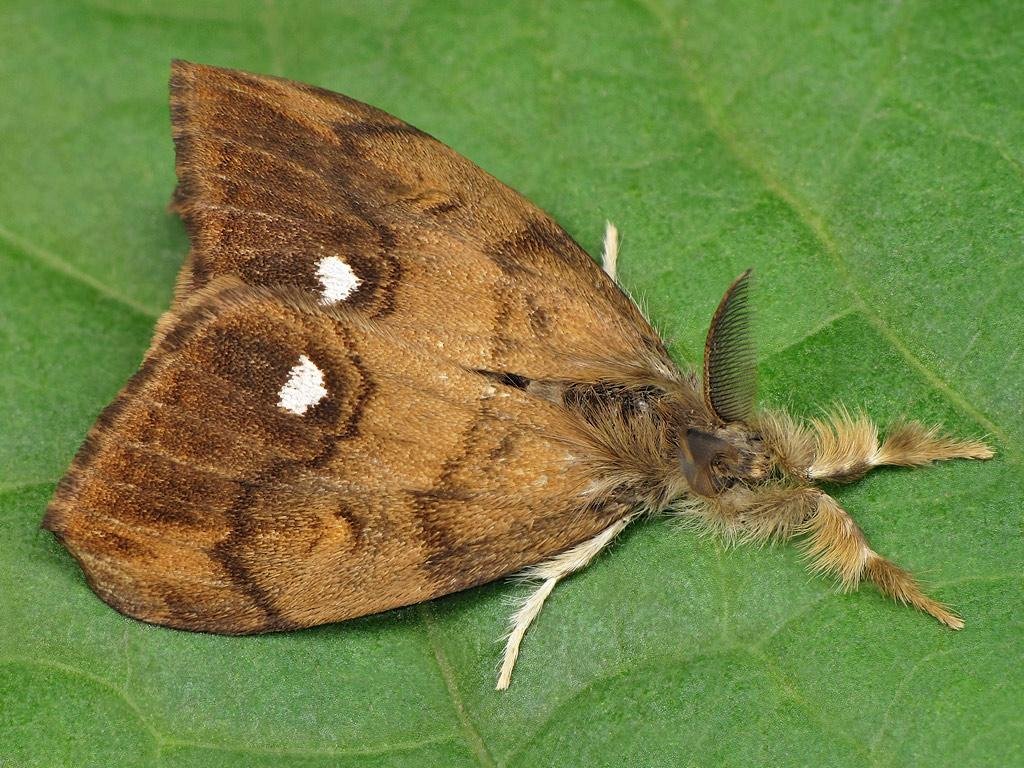Have you ever seen a moth with an impressive set of antennae that resemble an old-fashioned moustache? If so, then you may have encountered the vapourer moth, also known as Orgyia Antiqua. This fascinating species of moth is found all over the world and has some unique characteristics that make it truly one-of-a-kind.
The vapourer moth boasts an impressive set of antennae that can grow up to twice the length of its body. Their vibrant colouring and beautiful patterning attract many admirers, but there are deeper secrets hidden within this species that make it even more interesting. For instance, did you know that female vapourer moths don’t have wings?
This article will explore the unique qualities and behaviours of the vapourer moth in greater detail and explain why they are such captivating creatures. Discover how this unusual species survives without wings, how their antennae help them find mates, and why they are considered a pest by some farmers. Keep reading to learn more about this extraordinary insect!
Overview Of The Vapourer Moth
The vapourer moth (orgyia antiqua) is a species of moth found in parts of Europe, Asia, and North America and belongs to the family Erebidae. It is an interesting insect and has some peculiar characteristics.
The adult male moth has a wingspan of about 1-2 cm and is usually bright yellow to yellowish brown in colour. Its wings are marked with white spots. The female has different wings – they are grayish-brown, covered with scales that look like fur. She also lacks the black spots that males have. Both genders have long antennas, although the female’s antennae can be up to twice as long as those of the male.
When it comes to behaviour, the female will lay her eggs on leaves or bark near food sources such as caterpillars – her main prey item. The larvae hatch from these eggs after several weeks and feed on their hosts until they are ready to pupate into adults. The pupal stage lasts for around two weeks before the adult moths emerge to start another generation cycle. The vapourer moth can be found mostly during late spring and early summer months when its population peaks in abundance.

How To Identify a Vapourer Moth
Identifying the vapourer moth can be challenging, as it has several lookalikes. The most distinctive characteristic of this species is its greyish-brown wings, which have a rusty hue on their outer edges and are marked with white specks. They also have thick black tufts of hair at the tips of their wings. Additionally, they possess two large white spots in the centre of each wing and a black-tipped tail.
In terms of size, vapourer moths tend to range from 1 cm to 3 cm in length and usually have a wingspan between 2 cm and 5 cm. Furthermore, males have an orange head with black antennae while females have a more uniform colouration across their bodies. All in all, distinguishing the vapourer moth from other species is possible when one looks for these specific characteristics.

Habitat And Distribution
In terms of its habitat, the vapourer moth prefers humid environments with plenty of vegetation. It’s not just limited to parks, gardens, and other human-made areas – these moths can also be found in woodland clearings or heaths. During their larval stage, these moths feed on a variety of trees and shrubs including oak, hawthorn, hazel, birch, and willow. They are most active at night when they fly around looking for food sources.
The vapourer moth has made itself at home in many different countries across Europe such as Austria, Germany, Switzerland, France and the UK. Additionally, some parts of Russia and China are known to be home to this species too. With such wide distribution comes great adaptability; the vapourer moth is able to survive in a variety of climates from temperate rainforests to semi-arid regions.
Diet Of The Vapourer Moth
The diet of the vapourer moth caterpillar is an important factor in its life cycle. It primarily feeds on a variety of plants and shrubs, including maple, oak, hickory, alder, ash and birch trees. They also feed on the leaves of various herbs and vegetables like tomato, cabbage and lettuce.
The larvae feed on leaves for about four weeks before pupation. During this time, they consume large amounts of foliage, which can have a devastating effect on crops or gardens. They also feed on nectar from flowers to gain energy for their long-distance migrations.
To sum up, the vapourer moth caterpillar has a very varied diet that includes plants and other living organisms. If left unchecked, its feeding habits can cause considerable damage to crops or gardens. It is important to be aware of its presence so that control measures can be taken if necessary.

Predators Of The Vapourer Moth
Most common among the predators of the vapourer moth are birds, spiders, wasps, and ladybirds. Birds often feed on both the larvae and pupae of the vapourer moth. Spiders are also known to feed on these stages of development as well as adult moths. Lastly, ladybirds will happily eat many of the vapourer moth’s eggs and larvae.
Reproduction Of The Vapourer Moth
The vapourer moth, orgyia antiqua, has an interesting reproduction cycle. The female will lay her eggs on the underside of leaves and a cocoon of hairs protects them. When the eggs hatch, the larvae feed off the leaves and form an adult cocoon before pupating. The adult moths emerge from this cocoon in the summer months and mate to repeat the cycle.
The lifespan of these moths is very short – typically only about two weeks – but in that time they have managed to reproduce and keep the species going for millions of years.
Interesting Facts About The Vapourer Moth
The vapourer moth is an interesting species of insect that has some unique characteristics. For example:
- The males of this species have only one pair of wings, unlike other moths and butterflies which have two pairs.
- In addition to this oddity, they also possess a trait called ‘thyrsoclysis’, meaning they can shake their wings in order to produce sound.
- In terms of physical appearance, the moth’s body is covered with reddish-brown hair and its wings are marked with white spots.
- Its larvae are known for the silken cocoons they spin around themselves in order to protect themselves from predators. This is why it’s sometimes referred to as the ‘cocoon moth’.
- Apart from these traits, the vapourer moth also plays an important role in nature by being a valuable food source for many birds and small mammals. This makes them a key part of local ecosystems and shows how important it is to conserve these creatures.
Conservation Status Of The Vapourer Moth
The conservation status of the vapourer moth varies depending on its location. In some areas, it is considered to be of least concern due to its wide distribution and large population size. However, it’s still important to watch this species, as environmental changes can impact their numbers.
In Britain and other countries where the moth has been introduced, it is listed as being a non-native species and is therefore monitored closely by conservationists. Additionally, in some parts of North America, the vapourer moth is listed as endangered or threatened due to habitat loss and pesticide use.
Additional Resources
Sources and References
- Vapourer moth (Orgyia antique) – forestresearch.gov.uk
- The Vapourer Moth: Wingless Females and Hairy Caterpillars – owlcation.com

Ash is a contributing author who has been writing about wildlife for as long as he can remember. He has a vast knowledge of many different types of animals, from the tiniest shrews to the great whales that live in the deepest oceans.

Thank you xx
Fascinating.
Just found a caterpillar on our hydrangea.👍🏻
You’re most welcome!